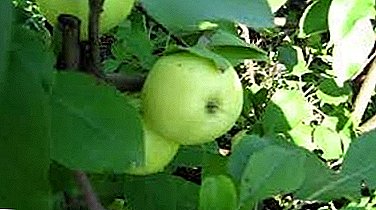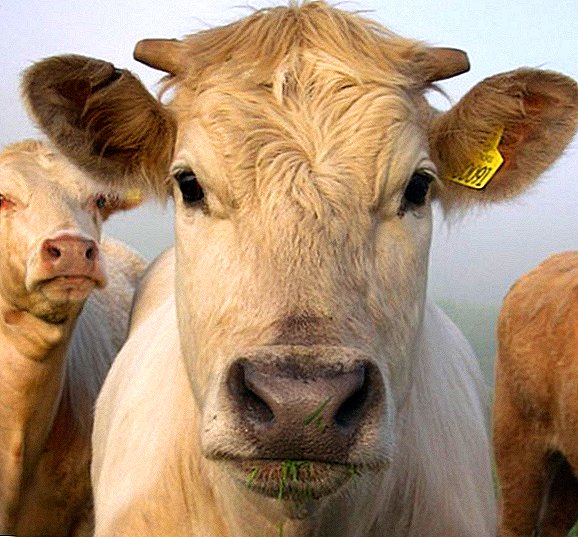 Although a veterinarian must be called in to make a diagnosis and prescribe the correct treatment, the owner of the cattle himself must be able to determine the first signs of illness. One of these diseases is trichomoniasis - quite a serious problem that needs proper treatment. This article focuses on the diagnosis and treatment of this disease.
Although a veterinarian must be called in to make a diagnosis and prescribe the correct treatment, the owner of the cattle himself must be able to determine the first signs of illness. One of these diseases is trichomoniasis - quite a serious problem that needs proper treatment. This article focuses on the diagnosis and treatment of this disease.
What is trichomoniasis
Trichomoniasis of cattle is an invasive disease affecting cows, bulls, and mares, as a result of which female animals undergo arbitrary abortions in the early stages, as well as vaginitis, metritis, males suffer from balanoposthitis and even impotence.
The pathogens of this disease parasitize in cows in the vagina, in the cervix, and also in the amniotic fluids, in bulls in the mucous membrane of the penis, and also in the accessory sex glands.
Did you know? The causative agent of trichomoniasis was first detected in the XIX century. On the territory of our country, he was diagnosed for the first time in the XX century in bulls. Today, this disease is common in Western Europe, Africa, Asia, Australia, and North and South America.
Pathogen, sources and routes of infection
The causative agent is the unicellular parasite Trichomonas fetus. The bacterium can be of different forms, in length can be from 8 to 30 microns. There are three long flagella in front, another one is directed backwards. Rapid reproduction occurs due to frequent cell division.  Unicellular parasites of Trichomonas fetus The main source of infection is sick animals, which, during mating or artificial insemination, transmit bacteria to healthy ones.
Unicellular parasites of Trichomonas fetus The main source of infection is sick animals, which, during mating or artificial insemination, transmit bacteria to healthy ones.
There are also other ways:
- non-sterile insemination tools;
- care items, such as bedding;
- infected manure and insects.
Did you know? Despite the fact that cows have a poorly developed sense of smell, they always carefully sniff the ground before eating grass on pasture. If there have recently been fertilizer, the animal will refuse to graze.The main danger is the high survivability of the parasite at low temperatures - it can live outside the body of the animal for up to 2 weeks.

Symptoms and course of the disease
The first manifestations of the disease are already visible a couple of hours after infection, since Trichomonas fetus has no incubation period.
Read more about what diseases can hurt cows and how to treat them.
Symptoms indicative of the disease are as follows:
- temperature increase to 41 ° С;
- constant movement of the pelvic limbs;
- looking back;
- brushing the tail;
- position change;
- loss of appetite;
- lower milk production;
- swelling of the vulva;
- redness of the vaginal opening;
- palpation is determined by pain;
- a rash appears on the vaginal mucosa;
- offensive discharge, similar in texture to pus;
- in pregnant women, the fetus is rejected.
 In bulls, the clinical picture is slightly weaker, however, the following symptoms appear:
In bulls, the clinical picture is slightly weaker, however, the following symptoms appear:- inflammation of the prepuce;
- catarrhal flow;
- redness;
- pain when urinating;
- discomfort with palpation of the penis.
After the parasite is moved to the seminal appendages, the symptoms disappear, at which time the sick bull becomes the carrier of the disease. In cows, the clinical symptoms appear for a month, then the inflammation becomes chronic.
Important! Animals that have had trichomoniasis for a long time after recovery remain sterile.The vestibule of the vagina is covered with thickening-nodules - a characteristic feature of trichomoniasis. At this time, inflammation of the oviducts and ovaries occurs, as well as their cysticity.
Establishing diagnosis
This disease is diagnosed using veterinary data, clinical signs, and microscopic examination of the material obtained from suspicious animals. An accurate diagnosis is made only after the selection of the pathogen.  It is recommended to take mucus for analysis during heat or in the first days after it. Research should be carried out immediately in the barn, so as not to cool the material and at the same time slow down the movement of parasites. Diagnosis is carried out three times in a row at intervals of 10 days.
It is recommended to take mucus for analysis during heat or in the first days after it. Research should be carried out immediately in the barn, so as not to cool the material and at the same time slow down the movement of parasites. Diagnosis is carried out three times in a row at intervals of 10 days.
Pathological changes
Trichomoniasis leads to the following pathological changes:
- A large amount of mucopurulent exudate is found in the uterus.
- The mucous membranes are swollen and hyperemic, with a blistering rash.
- The fruit is edematous.
- The ovaries contain small and large cysts.
- In bulls thickened mucous penis and appendages.
Control and treatment methods: medicines for uterus contraction, washing the uterus, antibiotics
Therapy for trichomoniasis should be comprehensive. Sick animals are often prescribed the use of funds that lead to the reduction of the uterus and the removal of inflamed material from it.
It will be useful for you to learn more about antibiotics for cows.
These drugs include:
- "Oxytocin";
- "Pituitrin";
- Prozerin.
 For irrigation mucous uterus prescribed:
For irrigation mucous uterus prescribed:- 10% solution of ichthyol on glycerin;
- amamargen diluted with water in a ratio of 1: 20000;
- "Chinosol";
- iodine in saline.
Important! A repeated test in cows is done 10 days after the completion of treatment. Bulls are checked after 2 months. If the results are positive, repeat the treatment.Patients bulls spend the following therapy:
- enter neurotropic drugs;
- process cavity prepution ichthyol ointment;
- hydrogen peroxide solution is applied;
- intramuscularly administered 1% solution of Trichopol in the amount of 100 ml;
- subcutaneously injected with a mixture of glycerin and water in the amount of 1: 3.

Preventive measures
The main preventive actions for trichomoniasis are:
- Insemination of cows with sperm of healthy bulls.
- In artificial insemination, strict observance of veterinary and sanitary standards.
- If new individuals appear on the farm, they are kept in quarantine and examined for trichomoniasis.
- During grazing, exclude contact with extraneous animals.
- The places where the infected individuals stayed are thoroughly disinfected.
We advise you to get acquainted with the top 10 interesting facts about cows.
As you can see, trichomoniasis is quite a serious disease that requires immediate action. It is important not only to comply with preventive measures, but not to postpone treatment even with minimal suspicion, and then your animals will be healthy for a long time.












